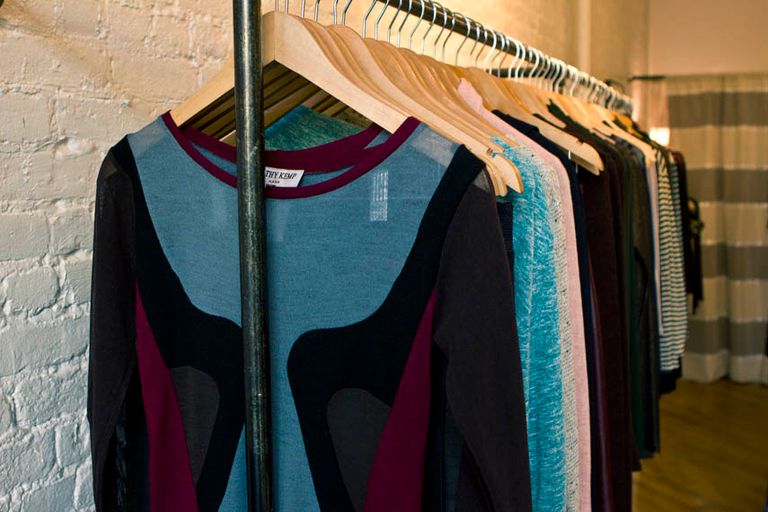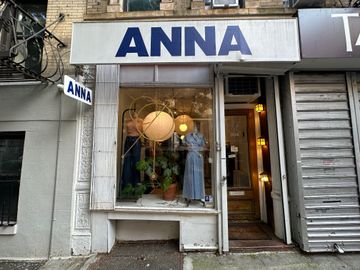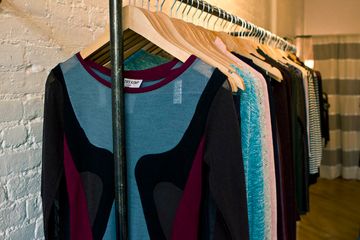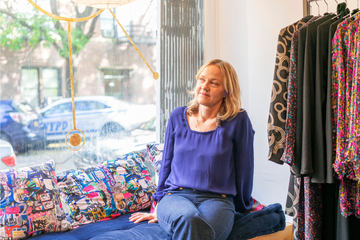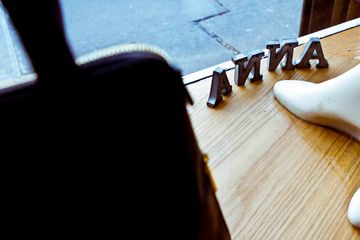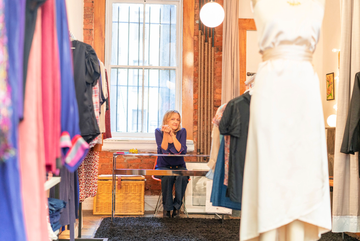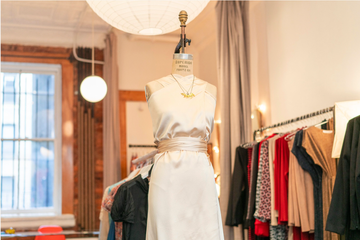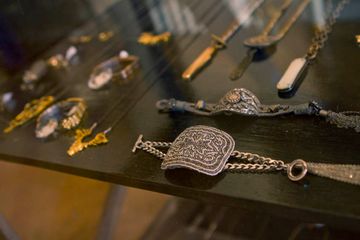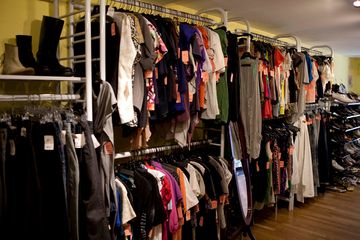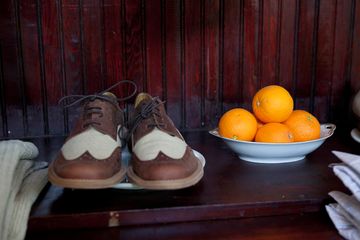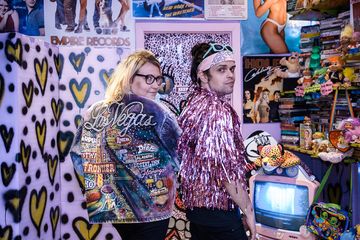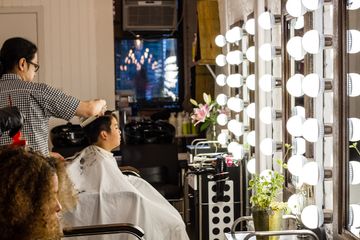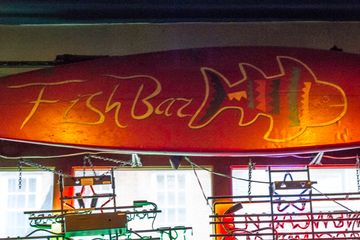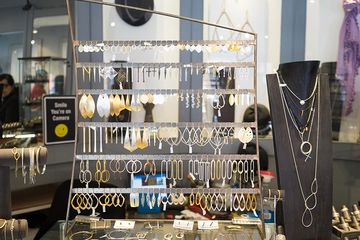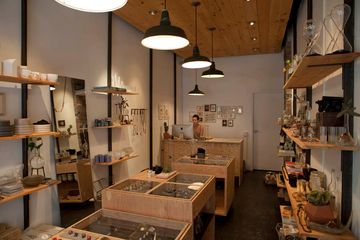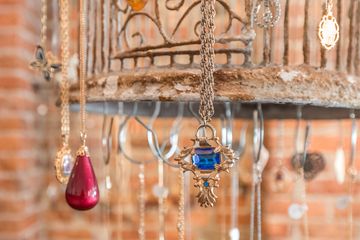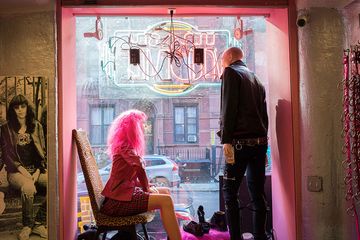Amanda Dolan and Meagan Colby have a wild, wacky, sparkly, and generally outrageous sense of style. On 9th street, they fit right in. Spark Pretty, their pop-up shop turned permanent storefront, has garnered plenty of attention since opening in the East Village in September 2017. The Manhattan Sideways team was eager to learn more about the story behind the store, and so we caught up with Amanda and Meagan on a quiet Tuesday in January. After stepping inside, the term “visual lifestyle brand” will make perfect sense to even the most fashion-hapless visitor. Amanda and Meagan have transformed the space from floor to ceiling with a spectacular collage of posters, lights, memorabilia, and clothing that is a work of art in itself. The design is anything but random. It does not take long to realize that everything has been carefully curated to reflect a particular aesthetic from the 1970s, 80s, and 90s, and that when it comes to the clothing, a great deal of effort has gone into acquiring each vintage dress, pant, jumpsuit, skirt, jacket, and curated T-shirt. In fact, Spark Pretty is the result of a lifelong passion for iconoclastic style. Amanda, who grew up in Greenwich, CT, stuck out among her peers who dressed in the "latest shades of beige. " She cites childhood visits to thrift shops with her grandmother as one of the reasons she enjoys looking different. Meanwhile, in California, Meagan made fashion statements of her own, whether it was with purple hair, piercings, or a pair of oversized dad jeans. The two women agree that they were lucky. They always knew who they were and what they wanted to wear to reflect their personalities. Careful not to come off as shaking their fingers at the younger generation, the pair insist that searching for buried treasures in bins and boxes helped them hone their personal style in a way that has become less common in the internet age. "Sometimes you don’t know what you are looking for until you find it, " Meagan admitted. The two friends first met as stylists working at Betsey Johnson, but when the retail chain filed for bankruptcy, they decided to strike out on their own. As part of their inventory at Spark Pretty, they have a selection of one-off items from the Betsey Johnson showroom. Both women agreed that working at Betsey Johnson was their "apprenticeship. " After over fifteen years of friendship, road trips, and shopping, the Spark Pretty brand was born. Now, along with in-house designer Thomas Knight (whose custom work has appeared on Usher, Lady Gaga, Madonna, and Rihanna), they are sharing their treasures with the world. During our conversation, something else became clear: Amanda and Meagan are committed to the East Village community. When it came time to decide on a permanent location, they discovered that 9th street made perfect sense. For one, it is a great shopping street with funk that fits the Spark Pretty vibe. More than that, they immediately recognized that it is a real neighborhood with a "tight knit family of fellow small business owners, " the type of place where they can plant real roots. That is not to say that running the store is easy. Even if their work is a labor of love, there is still plenty of labor involved and Amanda and Meagan have set high expectations for themselves. “9th Street is magical, ” said Amanda. "This is our little jewel box. "
